Author: Matt Del Fiacco
Used in respectable dosage rates for German styles such as Märzen and Dunkles, many brewers rely on smaller amounts of Munich malt add a toasty, rich malty character to styles ranging from Pilsner to Imperial Stout. Often mistakenly viewed as a specialty grain, Munich malt is considered a base malt and possesses the diastatic power to self-convert, meaning it can be use at rates up to 100% of the grist.
A somewhat unique aspect of Munich malt is that it comes in two main types, light and dark, which is an indication of its level of kilning. Munich malt on the lighter end of the spectrum typically clocks in around 5 °L and is known to impart enhanced malt flavors as well as hints of sweet graham cracker or even whispers of cherry to beer. Dark versions tend to hover around 10 °L, though darker variants are available, and add a more intense malt character to beer with an edge toward toasted bread.
I don’t have much experience using Munich malts on their own, as even my most Munich heavy recipes often include a blend of light and dark versions to create layers too intricately woven for me to parse out what either tastes like on its own. Curious to learn more about just how different light and dark Munich malts are, and to see if I might be overthinking my recipe design a bit, I decided to put it to the test!
| PURPOSE |
To evaluate the differences between 2 beers made identical proportions of either light or dark Munich malt.
| METHODS |
Seeing as Munich malt is generally used in conjunction with other base malts, the grainbills for each batch were a 50/50 blend of Pilsner malt and either light or dark Munich malt. Given the popularity of Weyermann malts, I chose to use their type I and type II Munich for this xBmt.
Dusk To Dawn
Recipe Details
| Batch Size | Boil Time | IBU | SRM | Est. OG | Est. FG | ABV |
|---|---|---|---|---|---|---|
| 5.5 gal | 90 min | 20.2 IBUs | 6.5 SRM | 1.056 | 1.015 | 5.5 % |
| Actuals | 1.056 | 1.012 | 5.8 % | |||
Fermentables
| Name | Amount | % |
|---|---|---|
| Munich I (Weyermann) | 5.5 lbs | 50 |
| Pilsner (Weyermann) | 5.5 lbs | 50 |
Hops
| Name | Amount | Time | Use | Form | Alpha % |
|---|---|---|---|---|---|
| Tettnang | 23 g | 90 min | First Wort | Pellet | 4.5 |
| Tettnang | 12 g | 30 min | Boil | Pellet | 4.5 |
Yeast
| Name | Lab | Attenuation | Temperature |
|---|---|---|---|
| Harvest (L17) | Imperial Yeast | 72% | 50°F - 60°F |
Notes
| Water Profile: Ca 80 | Mg 2 | Na 10 | SO4 125 | Cl 62 |
Download
| Download this recipe's BeerXML file |
My first order of business on brew day was collecting two identical volumes of water, adjusting both to the same profile, then heating them to strike temperature. I started the light Munich batch about 20 minutes before the dark Munich batch.
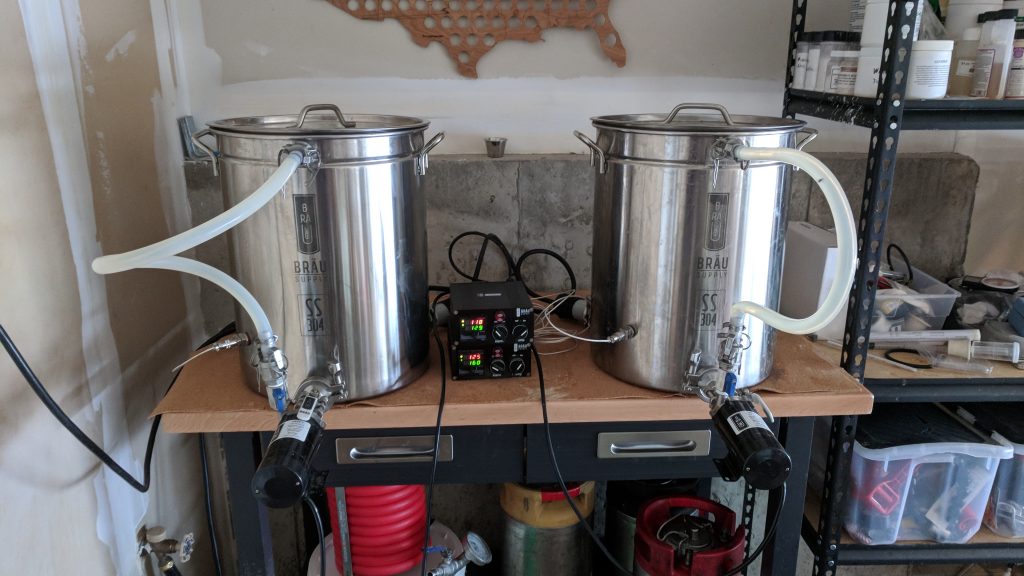
As the water was warming up, I weighed out and milled the grains for each batch.
With the water adequately heated, I mashed in and checked to ensure each batch hit the same target mash temperature.
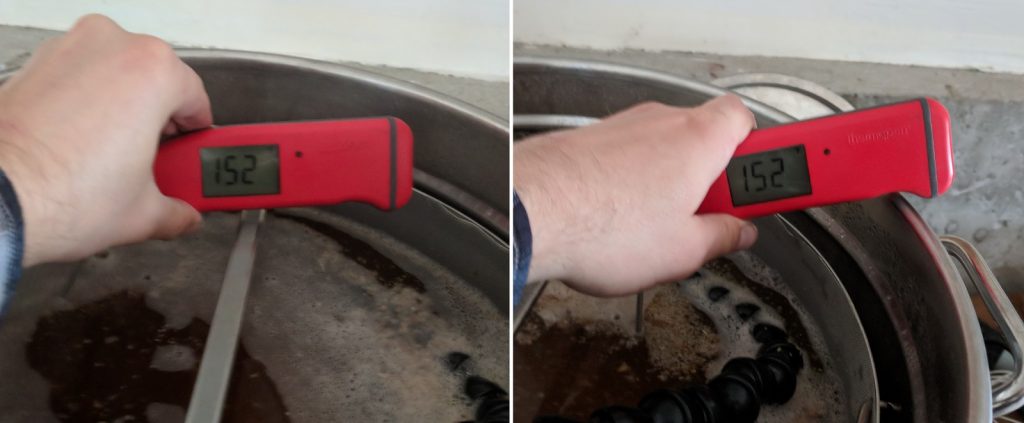
I took pH measurements about 15 minutes into either mash and found they were quite similar.
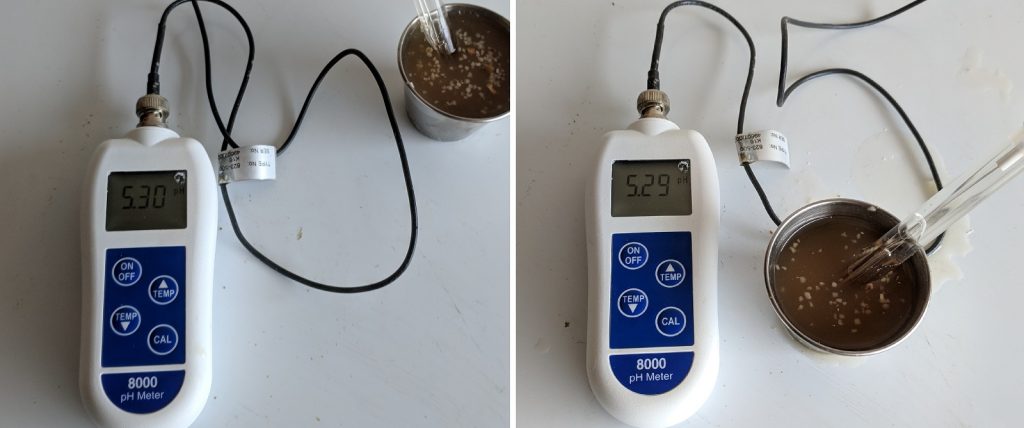
Following the 60 minute saccharification rest, I removed the grains and began heating the wort. Samples taken at this point revealed a noticeable and expected difference in color.
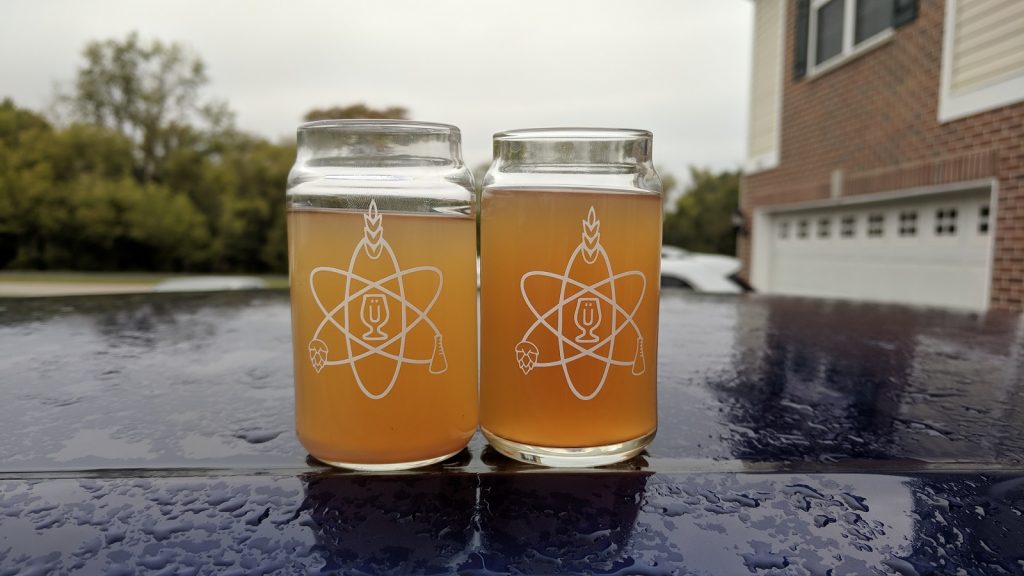
The wort was boiled for 60 minutes, after which I ran it through my CFC directly into sanitized fermentors for quick chilling.
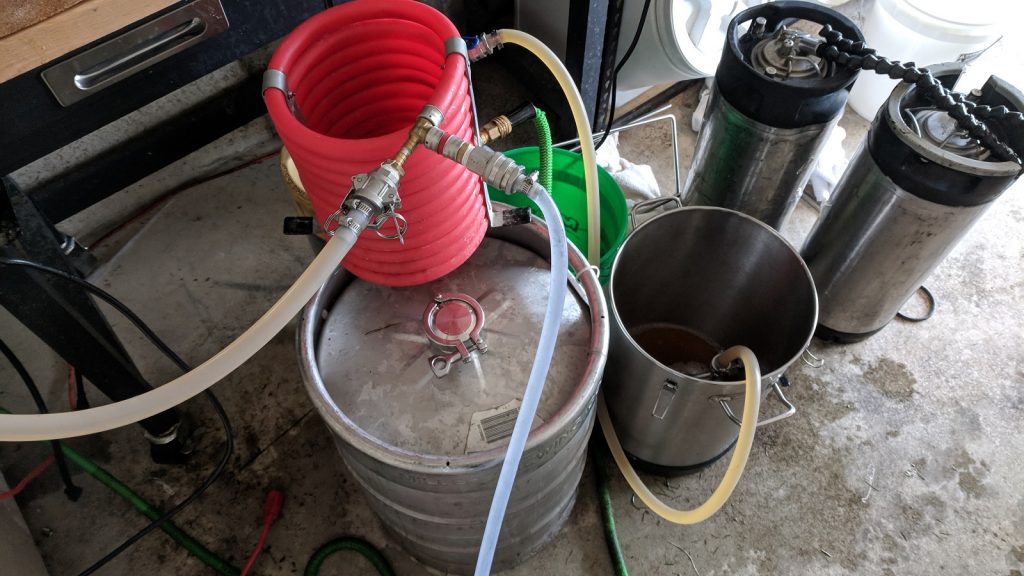
Using remnant wort from each batch, I made vitality starters with Imperial Yeast L17 Harvest.
Refractometer readings of the worts revealed they’d achieved the same OG.
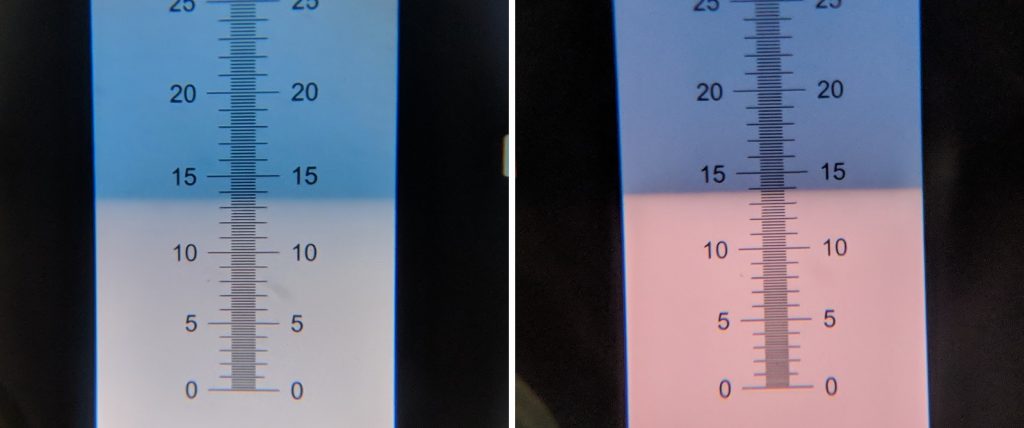
The filled fermentation vessels were placed in a chamber controlled to my desired fermentation temperature of 48°F/9°C and given time to finish chilling.
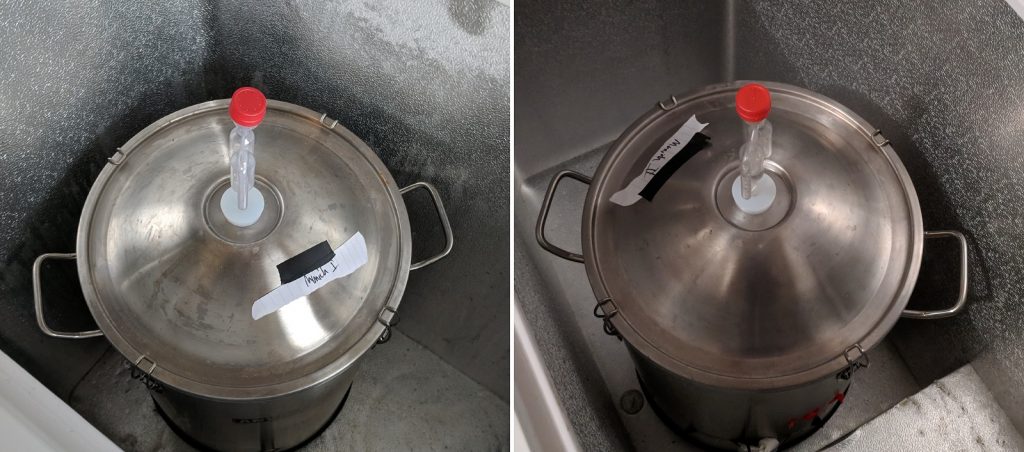
I returned 4 hours later to cool worts and pitched the yeast. Airlock activity was noticed in both the following morning and no other differences in fermentation were observed. After a week, I ramped the temperature to 60°F/16°C and left the beers alone a few more days for a diacetyl rest. Hydrometer measurements taken at 2 weeks post-pitch showed the beers had reached the same FG.
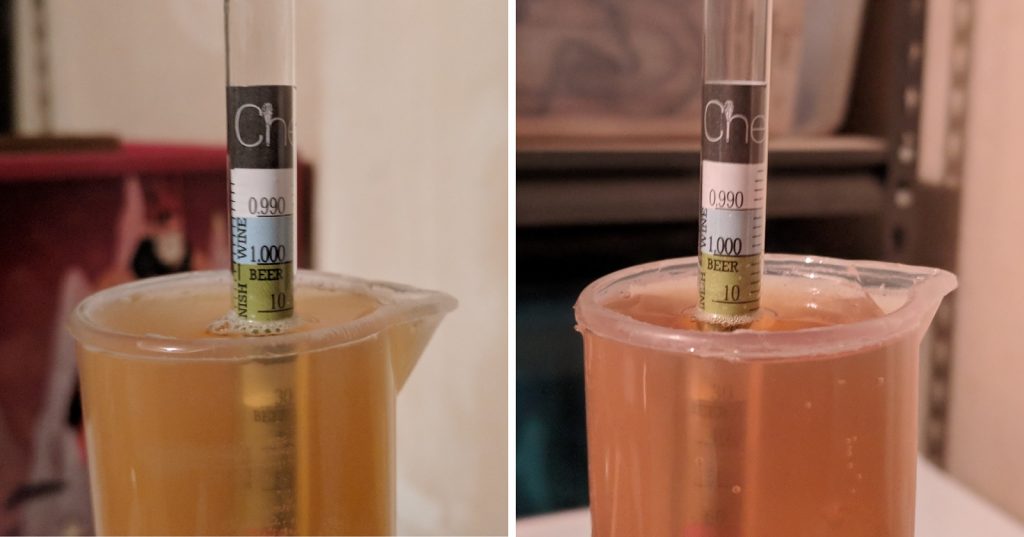
I proceeded with racking the warm beer to separate sanitized kegs.
The filled kegs were placed in my cool kegerator and put on gas. After a couple weeks of cold conditioning, both were clear, carbonated, and ready to serve.
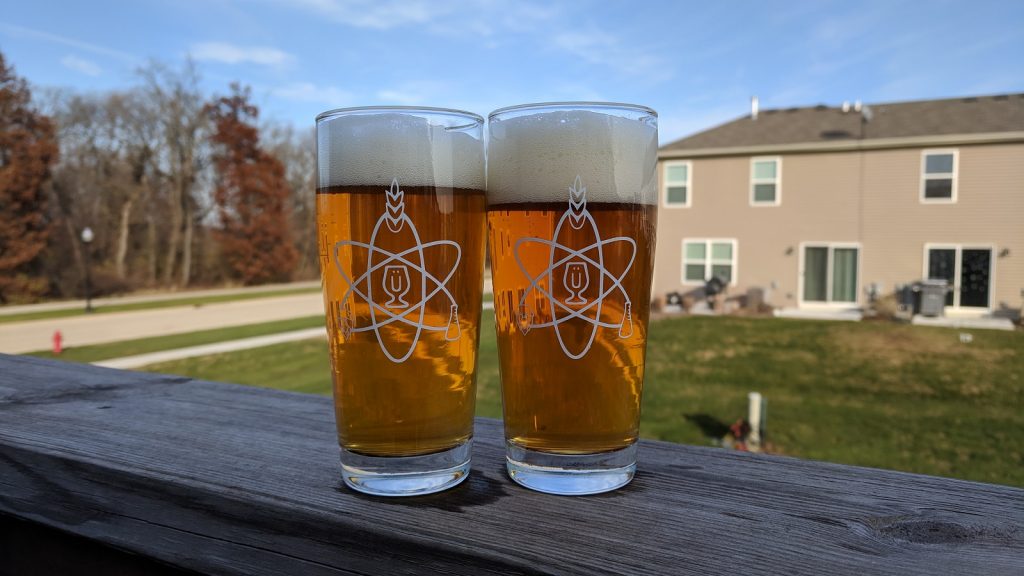
| RESULTS |
A total of 28 people of varying levels of experience participated in this xBmt. Each participant was served 1 sample of the beer made with light Munich malt and 2 samples of the beer made with dark Munich malt in different colored opaque cups then asked to identify the unique sample. While 14 tasters (p<0.05) would have had to identify the unique sample in order to reach statistical significance, 15 (p=0.022) made the accurate selection, indicating participants in this xBmt could reliably distinguish a lager made with Weyermann Type I (light) Munich malt from one made with Weyermann Type II (dark) Munich malt.
The 15 participants who made the accurate selection on the triangle test were instructed to complete a brief preference survey comparing only the beers that were different. A total of 8 tasters reported preferring the light Munich malt beer, 3 liked the dark Munich malt beer more, 3 people had no preference despite noticing a difference, and 1 person reported perceiving no difference.
My Impressions: Out of the 5 semi-blind triangle tests I attempted, I accurately identified the unique sample 3 times, and I’ll admit it was very difficult. Still, I felt dark Munich beer was a bit toastier and less sweet than the beer made with light Munich, and if forced to choose, I preferred the latter.
| DISCUSSION |
Munich malt is used by brewers around the world in various styles and dosage rates to impart beer with rich malty and toasty flavors. While both light and dark versions of Munich malt can be used to add nuanced character or serve as the feature malt, they presumably impart different flavors based on their different degrees of kilning. The fact tasters in this xBmt were capable of telling apart a beer made with 50% light Munich malt from one made with the same amount of dark Munich malt supports this seemingly obvious notion.
Considering Munich malt made up 50% of the grists in these xBmt beer, it’s likely the difference would be even more pronounced if more Munich malt was used. I was admittedly very skeptical tasters would be able to tell these beers apart seeing as the dark Munich is just slightly darker than the light version. In conversations following the triangle test, a few people noted a milder sweetness in the beer made with light Munich, reminiscent of cracker and grain, whereas the dark Munich beer was described as being more toasty with a richer malt sweetness.
Despite my knowledge of the variable, I struggled to tell them apart, they really tasted more similar than different to my palate. These results and my experience drinking these beers have inspired me to play around with various blends of light and dark Munich malts, and I also look forward to trying darker variants from other maltsters.
If you have any thoughts about this xBmt, please do not hesitate to share in the comments section below!
Support Brülosophy In Style!
All designs are available in various colors and sizes on Amazon!
Follow Brülosophy on:
FACEBOOK | TWITTER | INSTAGRAM
If you enjoy this stuff and feel compelled to support Brulosophy.com, please check out the Support page for details on how you can very easily do so. Thanks!


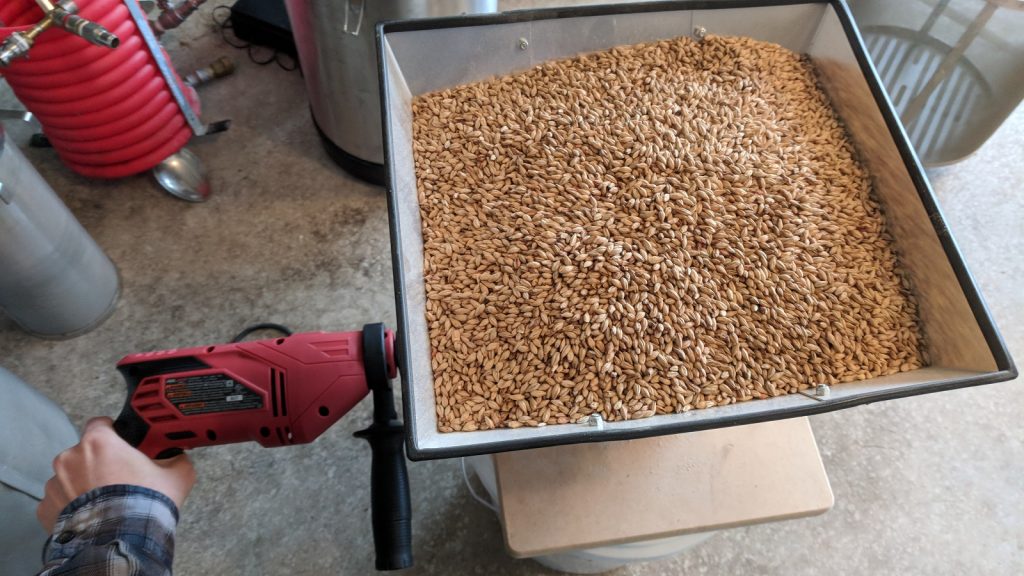
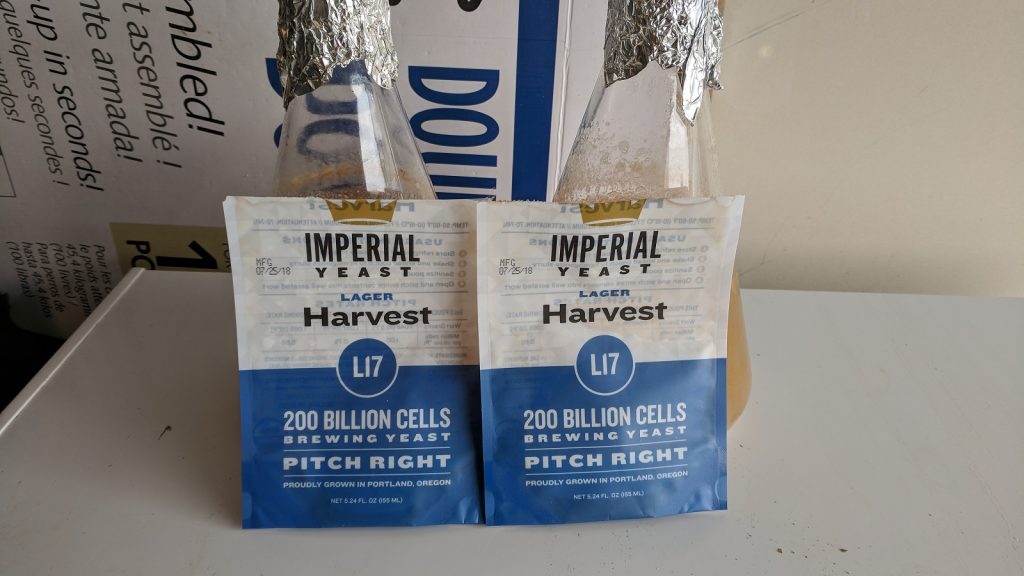
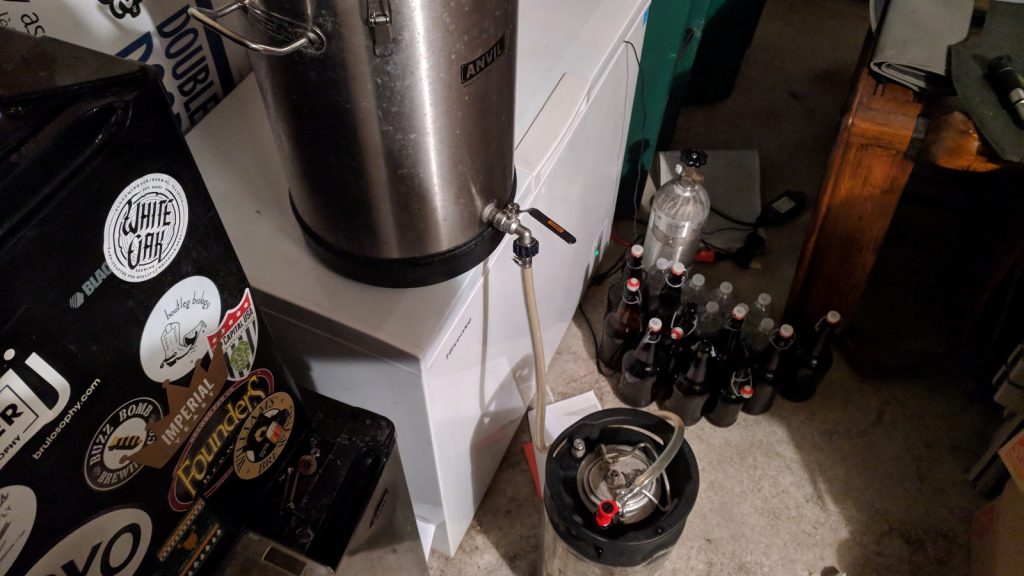











16 thoughts on “exBEERiment | Grain Comparison: Light vs. Dark Munich Malt In A Märzen”
You may want to look into Best Malz Red-X. It is reputed to be a blend of Munich malts.
Red-X is actually not a blend, but produced using a special roasting method. Some guy from the German home brewer forum called Best Malz and they confirmed this
While for Weyermann/Best/other German maltsters Munich malt has a color of between 5-8 °L / 8-12 °L (Weyermann is on the lower end, Best on the higher end), it is different with Briess, Great Western, Gambrinus (and maybe other Norther American maltsters), the paler version has 10 °L, while the dark version is 20° L or even 30° L. I was wondering about that difference when adjusting recipes from one side of the pond to the other side – I just went with color, so I replaced the pale Briess 10 °L with Weyermann Munich dark, but I wonder if this is the right thing to do flavor wise, maybe North American 2-row is different than European barley and needs a higher kilning temperature to get the same flavors? A comparison of Briess 10 °L vs. Weyermann 5°L vs. 10 °L would be interesting.
What style of beer does this fall under ?
I believe a festbier, under the new guidelines.
Matt, Thanks for running this test! I have frequently made Doppelbocks with 75% Weyermann type 1 munich and always have a bag of it or best and use it in many beer styles. I am now planning a dunkel with Type 2 munich and wondering what the maximum advisable % for its use is? I would think some % of pils malt will help with conversion. Obvioulsy both beers above are too light for Dunkel and I will also add some Roasted Wheat or Carafa dehusked
Munich II I believe can be used for up to 100% of the grist, so have at it! I believe my Dunkel recipe is something like 80% MunichI/II blend, 19% Pils, and 1% dehusked carafa iii.
As Matt said, you can use Munich II up to 100%, but I usually chicken out and add at least 1/2 lb of Pils to ensure efficient conversion.
Great test. I actually would have expected both the color and flavor to be more obviously different.
Same! It seems that tasters were able to tell, but personally it wasn’t as pronounced as I thought it would be.
surprised you had a 2:1 sulfate to chloride ratio. I would have thought the reverse for malt character enhancement. Can you comment as to your thoughts on the mineral profile?
Hi, I was wondering what formula or calculator you recommend to convert Brix readings to OG. I searched the website and didn’t find anything and the internet offers numerous calculators and I don’t know which one is best. Thanks in advance,
CHeers!
Well, I’ll plug my own since no one else is chiming in. After fermentation has begun and alcohol is present you need the second calculator on the page. https://brucrafter.com/convert-brix-to-sg/
Hey Mark,
Thanks for sharing, this helps! =) Right now I’m playing around with the calculators and trying to understand how they work so I can use it next time I brew something.
Thanks again!
Cheers,
Hi Mark, just wanted to say thanks again for sharing your calculator. I was a bit skeptic at first of how easy it is…Is it just as simple as entering initial and actual Brix readings, or am I missing something? I checked previous batches and compared the Brix to the actual hydrometer readings I had and they all match, so perhaps it is just that simple. This saves some work! I subscribed to your fb, tw & yt channel. Cheers!
Yep, it’s that simple! Very glad you found it useful, and thanks for subscribing to my stuff, very cool!